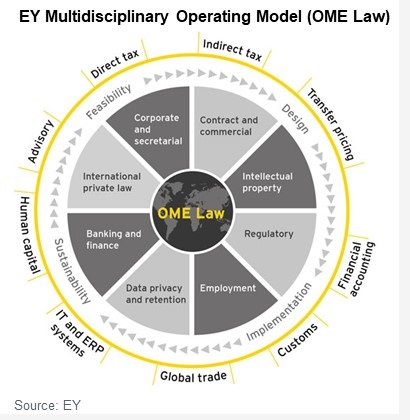Law.com Subscribers SAVE 30%
Call 855-808-4530 or email [email protected] to receive your discount on a new subscription.
Lawyers and Accountants: Collaborators and Competitors
A recent speech to a global network of lawyers and accountants highlighted the curious relationship they share. Lawyers and accountants are simultaneously collaborators and competitors. The paradox is reconciled by separating the professional and business/organizational elements of their dynamic.

This premium content is locked for Entertainment Law & Finance subscribers only
ENJOY UNLIMITED ACCESS TO THE SINGLE SOURCE OF OBJECTIVE LEGAL ANALYSIS, PRACTICAL INSIGHTS, AND NEWS IN ENTERTAINMENT LAW.
- Stay current on the latest information, rulings, regulations, and trends
- Includes practical, must-have information on copyrights, royalties, AI, and more
- Tap into expert guidance from top entertainment lawyers and experts
Already a have an account? Sign In Now Log In Now
For enterprise-wide or corporate acess, please contact Customer Service at [email protected] or 877-256-2473

Beach Boys Songs Written Decades Ago Triggered Current Quarrel With Lawyers
There's current litigation in the ongoing Beach Boys litigation saga. A lawsuit filed in 2019 against Nevada residents Mike Love and his wife Jacquelyne in the U.S. District Court for the District of Nevada that alleges inaccurate payment by the Loves under the retainer agreement and seeks $84.5 million in damages.

Major Differences In UK, U.S. Copyright Laws
This article highlights how copyright law in the United Kingdom differs from U.S. copyright law, and points out differences that may be crucial to entertainment and media businesses familiar with U.S law that are interested in operating in the United Kingdom or under UK law. The article also briefly addresses contrasts in UK and U.S. trademark law.

The Article 8 Opt In
The Article 8 opt-in election adds an additional layer of complexity to the already labyrinthine rules governing perfection of security interests under the UCC. A lender that is unaware of the nuances created by the opt in (may find its security interest vulnerable to being primed by another party that has taken steps to perfect in a superior manner under the circumstances.

Strategy vs. Tactics: Two Sides of a Difficult Coin
With each successive large-scale cyber attack, it is slowly becoming clear that ransomware attacks are targeting the critical infrastructure of the most powerful country on the planet. Understanding the strategy, and tactics of our opponents, as well as the strategy and the tactics we implement as a response are vital to victory.

Transfer Tax Implications on Real Property Leases
The real property transfer tax does not apply to all leases, and understanding the tax rules of the applicable jurisdiction can allow parties to plan ahead to avoid unnecessary tax liability.

